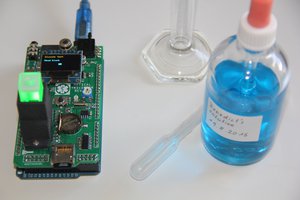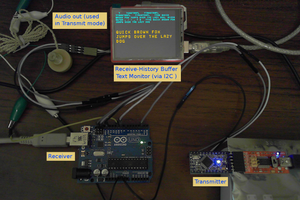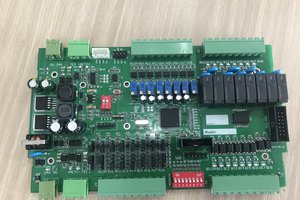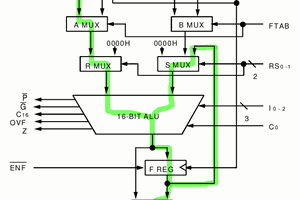Now it's currently developed as simulation of electronics systems with any-bit and any-trit numbers using modern C++ (2011 and above).
Later TRCM also could have:
- converter from Verilog to C++ for faster simulation/verification with C++ "testbench";
- converter from C++ representation to VHDL to synthesize it for your favorite FPGA/CPLD;
- converter from Logisim to C++ for fun etc.
Main idea was to stop using dedicated wires for inputs or outputs in high-level simulation - wires are just wires - each of them could be input or could be output or could be disconnected during simulation. So TRCM (full name is TRCMath C++ library) defines 10 states of the wire to cover all possible scenarios for binary and ternary digital electronics (revised on August 18th 2018):
// Wire states:
const char TRUE = 'P'; /* connected to positive voltage */
const char MAYBE = 'O'; /* connected to intermediate voltage */
const char FALSE = 'N'; /* connected to the ground */
const char ANYBIT = 'X'; /* for comparisons only */
const char ANYTRIT = 'Y'; /* for comparisons only */
const char NC = 'Z'; /* not connected (high impedance) */
const char PULLUP = '1'; /* weak pull-up to positive voltage */
const char PULLDOWN = '0'; /* weak pull-down to the ground */
const char PULLMID = '-'; /* weak pull-middle to intermediate voltage */
const char INVALID = '?'; /* conflict on the wire (simulation halts) */
// Aliases:
const char HIGHIMP = NC;
const char POSITIVE = TRUE;
const char NEUTRAL = MAYBE;
const char NEGATIVE = FALSE;
Also TRCM gives user ability to use N-bit or N-trit numbers and perform math with them. Currently available classes:
Signal - the same as Wire<1>;
Wire<N> - N wires;
Uint<N> - N-bit unsigned integer;
Sint<N> - N-bit signed integer;
Tint<N> - N-trit balanced ternary integer (sign is already embedded into this representation naturally).
A few existing TRCM classes support simulation: System, Entity, Connection and RuntimeException.
Source code is available on GitLab under GPL v3: https://gitlab.com/ternary/trcm
And I will post examples of TRCM usage here in this projects as logs...
 SHAOS
SHAOS
 M. Bindhammer
M. Bindhammer

 daovanhoa12
daovanhoa12
 Yann Guidon / YGDES
Yann Guidon / YGDES